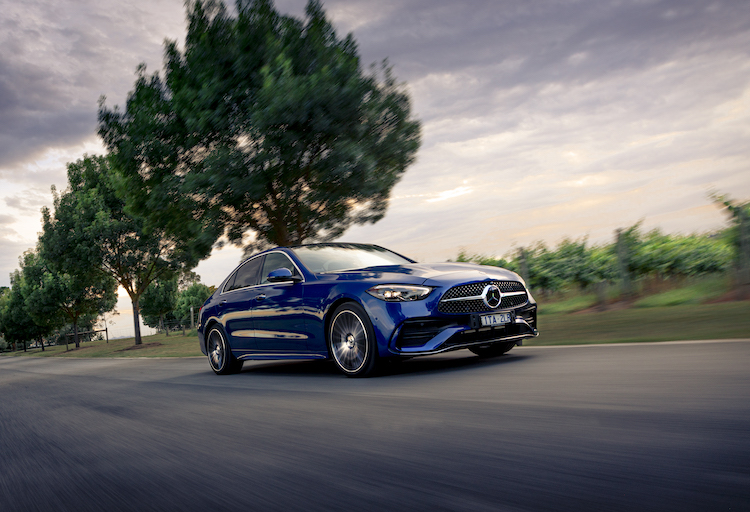
Mercedes-Benz New Zealand has launched two mild-hybrid four-cylinder petrol variants of the all-new C-Class sedan to market, with a plug-in hybrid electric vehicle (PHEV) and a high-performance AMG variant to follow later this year.
The C 200 sedan will retail from $86,000 and the C 300 sedan from $102,900.
Bigger, wider, and longer than the outgoing generation the new C-Class inherits much of its technology and design from the new flagship Mercedes-Benz S-Class sedan.
It offers new generation hybrid assistance from a 48-volt electrical system, AMG Line exterior and interior packages, 11.9-inch central media display, 360° camera, Keyless-Go entry and start with automatic powered boot closing, front centre airbag, fingerprint scanner and active safety systems including the radar cruise control system, active distance assist Distronic.
With a length of 4793 mm in standard AMG Line guise and a width of 1820 mm, the new C-Class is considerably larger than its predecessor. The wheelbase has increased by 25 mm to 2865 mm, with both front and rear passengers benefiting from the increased exterior dimensions says the manufacturer.
Elbow room has been increased by 22 mm in the front and 15 mm in the rear, while headroom in the rear has increased by 13 mm. Thanks to up to 35 mm more knee-room in the second row, journeys are more pleasant for rear-seat passengers.
The C-Class has been the highest-volume Mercedes-Benz model of the past decade, with more than 2.5 million examples sold globally since the introduction of the current generation in 2014 (including over 4,000 in New Zealand). The first C-Class was introduced in May 1993. In 2020, C-Class variants were delivered to customers in more than 100 markets around the world.
Mercedes-Benz packages a 48-volt on-board electrical system into both the C 200 and C 300 models, effectively turning each powerplant into a mild hybrid that also adds significant benefits to overall driveability.
Equipped with the 1.5-litre version of the M 254 petrol engine and 9G-TRONIC auto, the engine of the C 200 Sedan before mild hybrid assistance makes 150 kW of power and 300 Nm of torque, with a fuel economy rating of 6.9 L/100 km (ADR combined). The C 300 Sedan, with a 2.0-litre M 254 engine, makes 190 kW and 400 Nm, and achieves an economy figure of 7.3 L/100 km.
Acceleration from 0 to 100 km/h for each of the two models takes 7.3 s and 6.0 s respectively.
The two turbocharged four-cylinder models offered at launch will be followed by the C 350 e, a four cylinder plug-in hybrid with outputs of 150 kW / 320 Nm from its combustion engine, and 95 kW / 440Nm from its electric motor.
A substantial improvement in e-range over the model it replaces means the C 350 e may operate in all-electric mode in many cases – and on some days, without using the combustion engine at all according to Mercedes-Benz.
The C 350 e is scheduled for a New Zealand launch during 2022, with more details to come.
An optional rear-axle steering is available for the new Mercedes-Benz C-Class, which is a first in this segment. This can add steering angle at the rear axle of 2.5 degrees, reducing the turning circle by 43 centimetres to 10.64 metres. It also creates especially agile and stable handling, and a more direct steering ratio at the front axle. The driver also needs fewer turns of the steering wheel for full lock.








